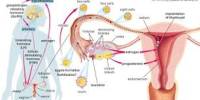While research has shown that natural catastrophes can lead to melancholy, anxiety, and post-traumatic stress disorder, they have little effect on the “big five” personality qualities, at least in adults. However, a comparison of these characteristics before and after the pandemic revealed a discernible change in behaviors typically seen as undesirable, with the effect being greatest in young people.
An adult American population sample is regularly surveyed online by the Understanding America Study. Researchers now have a baseline for thousands of people’s replies to common questions from 2014 thanks to the outbreak.
In a recent study, researchers compared these findings to polls that the same individuals completed in the early stages of the pandemic and again in 2021–2022. Participants might not be completely representative (for instance, only 41% of respondents were men), but a sample of more than 7,000 persons with an average of 2.62 surveys per person is a sizable pool to work with.
Initial findings seemed to agree with earlier research. Extraversion, openness, agreeableness, and conscientiousness were the four attributes that showed no change in 2020, while measurements of neuroticism showed just a slight improvement. The individuals’ small decrease in neuroticism was the only item that was unexpected.
This does match two other small studies, which is not what one may have anticipated in the face of a pandemic and a rise in conspiracy theories intended to heighten paranoia. Survey results from 2021 and 2022, however, were very different. People were much less outgoing, open, agreeable, and conscientious than they were prior to the virus, according to their responses.
Over the course of a person’s life, personality can change, but often slowly. If it seems like the last two years have aged you ten years, you’re not alone. The disparities the paper presents, which were roughly a tenth of a standard deviation on each measure, were similar to those generally observed across a decade.
The majority of the effect, according to the authors’ analysis of the sample’s demographics, was among young people. There were no statistically significant improvements among older participants.
However, among those between the ages of 18 and 30, neuroticism greatly outpaced agreeableness and conscientiousness in 2021/22 as compared to earlier years. A more usual slight increase in people’s 20s contrasted with the significant drop in these two metrics.
Hispanic respondents had a bigger change than respondents from other ethnic groups, but no other demographic differences were seen.
Numerous articles, almost often negatively, psychoanalyzing a generation can be produced by studies like this one. As a result, it’s crucial to recognize that the data show more consistency than change. The majority of people don’t really alter significantly from their pre-pandemic personalities, and averages conceal significant individual diversity.
Furthermore, the majority of the 2021–22 surveys were conducted while death rates were still high; it will be a significant amount of time until (hopefully) improved public health that we will be able to determine whether these effects are long-lasting.
Personal stressful or traumatic events have been found to alter people’s personalities in previous research, therefore it is puzzling that events that affect entire communities don’t have the same effect.
















